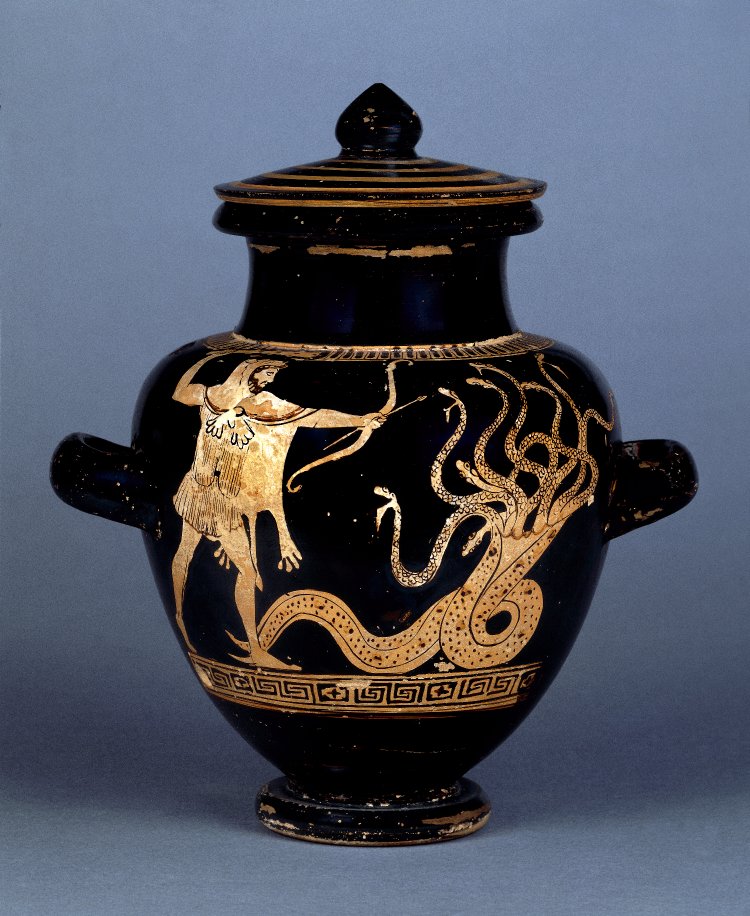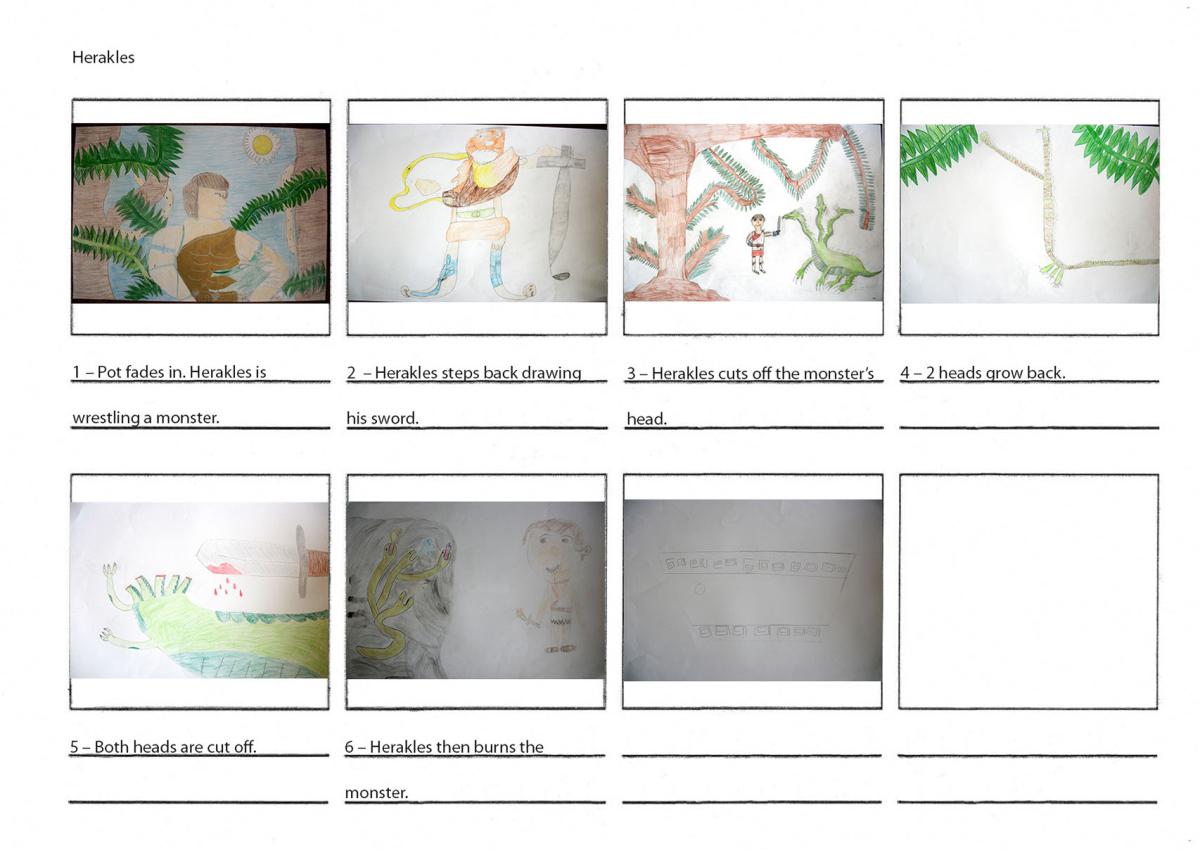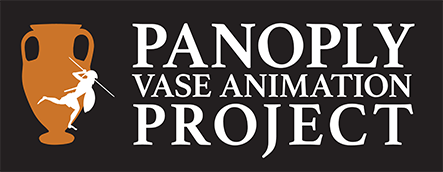The story was developed by pupils from Addington School, Reading as part of the Ure Discovery project. An Arts Council funded project run at the University of Reading’s Ure Museum of Greek Archaeology in 2013.
This animation combines two myths. In the first, Heracles defeats a fish-tailed deity in a wrestling match. It’s hard to tell images of water deities apart. Poseidon was the top sea deity but it can't be him because he had legs not a fish-tail. Many others were thought to exist, including Oceanus, Proteus, Nereus, Triton, and a host of river gods.
It’s most likely that this vase depicts a wrestling match with the river-god Acheloüs, as there are lots of references in ancient literature to Heracles wrestling this powerful deity. Most describe the fight as a contest for the right to marry the princess Deianeira. In the ancient play, Women of Trachis, Sophocles (author of Oedipus Rex) gives Deianeira a speech recalling how Heracles defeated the shape-shifting Acheloüs, saving her from an unwanted marriage (Women of Trachis, lines 9-30). But her marriage to Heracles wasn’t a happy one, and eventually Deianeira unwittingly killed Heracles by smearing his clothes with poisonous blood.
The blood had come from an episode in which Heracles shot a centaur with arrows dipped in the blood of the Hydra.
The myth of the Lernaean Hydra is the other story that has been woven into this animation. Killing this monster was one of Heracles’ Twelve Labours. Each time he chopped off one of the Hydra’s heads, two would grow back in its place. Using intelligence as well as combat skill, Heracles worked with his companion Iolaus to burn the Hydra’s neck-stumps each time a head was chopped off. With the wounds seared shut, new heads could no longer grow back and the Hydra was defeated.

© Trustees of the British Museum. 1929,0513.1
Images of the defeat of the Hydra and of Heracles’ match with Acheloüs both featured (along with other myths) on a carved throne of Apollo in his sanctuary at Amyclae near Sparta (see Pausanias, Guide to Greece, 3.18.13-16). Myths always exist in connection to other myths!
Most of the Heracles figure in this animation had to be freshly created, as the vase painter had positioned his body behind that of Acheloüs. The Heracles on the vase was augmented by sections which reflect other contemporary black figure images of Heracles. You can see lots of examples here: http://www.theoi.com/greek-mythology/heracles.html
This is the storyboard created by pupils from Addington School.

The music on this animation is called Nomos M. It was created by ancient music specialist Professor Conrad Steinmann of Melpomen.
Find out more about ancient music through our blogpost on the subject, and in interview with Prof. Steinmann.


